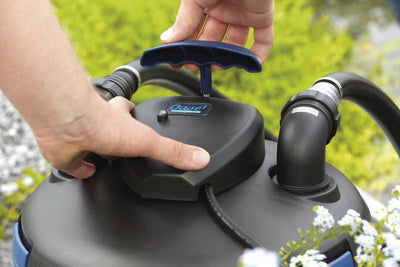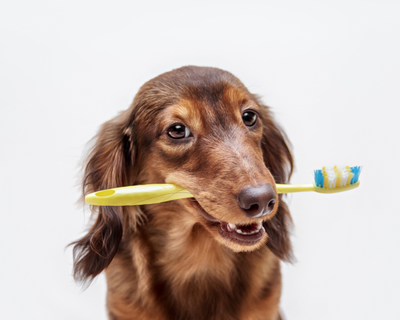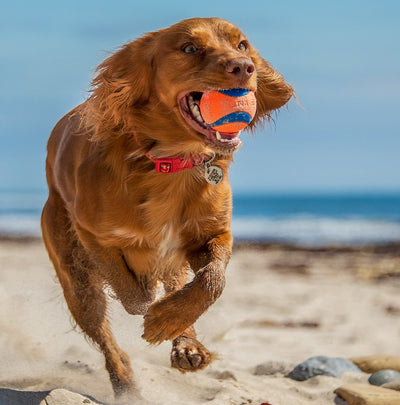
Just like humans, dogs can experience pain and discomfort in their bodies.
However, they may not be able to communicate their discomfort as clearly as we can.
That's where pressure points come in - by applying gentle pressure to certain areas of your dog's body, you can help alleviate pain and promote relaxation.
Here are the top 10 pressure points on dogs and how to use them next time your are bonding with your doggo!
What is Canine Acupressure?
Canine acupressure is a complementary therapy that involves the application of pressure to specific points on a dog's body to promote relaxation, balance, and healing. It is based on the principles of traditional Chinese medicine (TCM), which views the body as a system of interconnected energy pathways, or meridians, through which vital energy, or Qi (pronounced "chee"), flows.
Canine acupressure uses fingers, hands, or other tools to apply pressure to specific acupoints along the meridians of a dog's body. The pressure is applied in a gentle, rhythmic manner, and the acupoints are typically held for a few seconds to several minutes, depending on the desired effect.
The goal of canine acupressure is to stimulate the body's natural healing abilities, promote relaxation, relieve pain, and restore balance and harmony to the body's energy flow.
How Can Acupressure Help My Pet?
Dogs have various pressure points that can be targeted through acupressure to  address a range of issues. These pressure points include those for anxiety, arthritis, digestion, respiratory problems, and more. By applying pressure to these specific points, acupressure can help improve your dog's overall health and well-being.It is important to note that while pressure points can provide some relief, it is always best to consult with a veterinarian for proper diagnosis and treatment of issues in dogs.
address a range of issues. These pressure points include those for anxiety, arthritis, digestion, respiratory problems, and more. By applying pressure to these specific points, acupressure can help improve your dog's overall health and well-being.It is important to note that while pressure points can provide some relief, it is always best to consult with a veterinarian for proper diagnosis and treatment of issues in dogs.
Be sure to use gentle pressure and stop if your dog shows any signs of discomfort.
The Base of the Skull.
The base of the skull is a pressure point that can help relieve tension and headaches in dogs. To locate this pressure point, place your fingers at the base of your dog's skull, just behind their ears. Apply gentle pressure and massage in a circular motion for a few seconds. This can help promote relaxation and relieve any tension in the neck and head area.
The Shoulder Blade.
The shoulder blade is another pressure point that can help relieve pain and discomfort in dogs. To locate this pressure point, place your fingers on the top of your dog's shoulder blade, just behind their front leg. Apply gentle pressure and massage in a circular motion for a few seconds. This can help relieve tension in the shoulder and upper back area.
The Elbow.
The elbow is a pressure point that can help relieve pain and discomfort in dogs, particularly in the front legs. To locate this pressure point, feel for the bony protrusion on the inside of your dog's elbow. Apply gentle pressure and massage in a circular motion for a few seconds. This can help relieve tension in the elbow joint and surrounding muscles.
The Wrist.
The wrist is another pressure point that can help relieve pain and discomfort in dogs. To locate this pressure point, feel for the bony protrusion on the inside of your dog's wrist. Apply gentle pressure and massage in a circular motion for a few seconds. This can help relieve tension in the wrist joint and surrounding muscles.
The Hip.
The hip is a common area where dogs may experience pain or discomfort, especially as they age. To locate the pressure point on the hip, feel for the bony protrusion at the top of the thigh bone where it meets the hip socket. Apply gentle pressure and massage in a circular motion for a few seconds. This can help relieve tension in the hip joint and surrounding muscles.
Back Legs.
Dogs have pressure points all over their bodies, but some of the major ones are located in the joint regions, such as the knee and hip. To massage these areas, use your thumb on one side and your forefingers on the other, applying pressure as your pet allows. If you notice that the area is warmer than other parts of the leg, it could be a sign of inflammation due to arthritis or injury. You can also massage the hip by pressing your forefingers into the area where the upper leg meets the pelvis and rubbing back and forth or in a circular motion.
Base of the Spine.
Dogs have several pressure points along their spine, but one of the most significant is the Bai Hui or Heaven's Gate point. This point is located in the sacral area of the back and can be stimulated through massage and pressure to provide various benefits. Massaging this area can help reduce pain, improve blood flow, alleviate anxiety, and enhance the health of organs like the liver, spleen, and kidneys.
Paws.
Dogs have pressure points located in their paws that can be massaged to help with various health issues. However, not all dogs are comfortable with having their feet touched. If your dog is willing, you can work your way from the wrist area down to their feet and massage individual toes and the areas between them. This can help with chronic diseases, arthritis pain, and improve blood flow. It's important to keep an eye out for any signs of infection or irritation, such as excessive redness or staining of the fur between the toes.
with various health issues. However, not all dogs are comfortable with having their feet touched. If your dog is willing, you can work your way from the wrist area down to their feet and massage individual toes and the areas between them. This can help with chronic diseases, arthritis pain, and improve blood flow. It's important to keep an eye out for any signs of infection or irritation, such as excessive redness or staining of the fur between the toes.
Chest and belly
We know most dogs love a good belly rub and there could be a very good reason for this! The belly is an area with a high concentration of nerve endings, and rubbing or scratching it can stimulate those nerves, leading to pleasurable sensations for dogs. This can result in a release of endorphins, which are feel-good hormones that can further enhance their enjoyment.
Dogs have specific pressure points that can be targeted for various benefits. One of these points is the Conception Vessel, located in the center of the chest running down to the abdomen. This area is great for digestion, breath, and centeredness. To massage this area, use one or both hands to apply gentle circular or back and forth pressure to your pet's belly. The exact Conception Vessel point is located at the center of your pet's stomach region halfway between their front and back legs and right on the midline of the body. Massaging this entire region can also provide your pet with a relaxing and enjoyable experience.
Ears
Dogs have pressure points throughout their bodies that can be massaged to help relieve stress and tension. One such point is located on the ears. Gently hold the ear between your thumb and fingers and rub from the tip to the base where it meets the skull. Your furry friend will likely enjoy this soothing massage and may even lean into it. If your dog is showing signs of ear pain, such as shaking their head or a hot, inflamed ear, it's important to seek medical attention before trying any kind of treatment.
what are the benefits of gently massaging your dog?
Gently massaging your dog can provide a range of benefits for their physical and mental well-being.
and mental well-being.
Massage can help to relax dogs and reduce stress by promoting the release of endorphins, which are feel-good hormones that can help to calm the nervous system. This can be particularly helpful for dogs who are anxious, fearful, or nervous.
Massage can help to alleviate muscle tension, soreness, and stiffness, which can be beneficial for dogs with musculoskeletal issues such as arthritis, muscle strains, or injuries. It can also help to improve circulation, which can promote healing and reduce inflammation.
Massage can strengthen the bond between a dog and their owner or caregiver  by providing nurturing touch and positive interaction. It can also help to build trust, increase relaxation, and enhance the human-dog relationship. There are even massage brushes and grooming mits to help make pampering as relaxing as possible for your dog. These have rubber nodes that are designed to massage your dog with every stroke!
by providing nurturing touch and positive interaction. It can also help to build trust, increase relaxation, and enhance the human-dog relationship. There are even massage brushes and grooming mits to help make pampering as relaxing as possible for your dog. These have rubber nodes that are designed to massage your dog with every stroke!
Canine massage can provide dogs with a pleasurable and enjoyable experience, promoting a sense of well-being and contentment. It can also help to stimulate the immune system, improve digestion, and support overall health and vitality.
It's important to note that not all dogs may enjoy or benefit from massage, and it's essential to always observe your dog's body language and comfort level during the session. If your dog shows signs of discomfort or distress, it's best to stop the massage and consult with a veterinarian or a qualified canine massage therapist for guidance. Additionally, it's important to use gentle and appropriate techniques, avoid sensitive areas, and never apply excessive pressure or force during a canine massage session.
© weknowpets 2023





